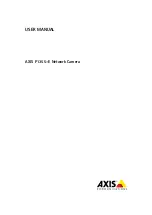
14-2
Catalyst 6500 Series Switch Software Configuration Guide—Release 8.7
OL-8978-04
Chapter 14 Configuring MLS
Understanding How Layer 3 Switching Works
Layer 3 switching on Catalyst 6500 series switches provides traffic statistics that you can use to identify
traffic characteristics for administration, planning, and troubleshooting. Layer 3 switching uses NetFlow
Data Export (NDE) to export flow statistics (for more information about NDE, see
Chapter 16,
“Configuring NDE”
)
.
These sections describe Layer 3 switching and MLS on the Catalyst 6500 series switches:
•
Understanding Layer 3-Switched Packet Rewrite, page 14-2
•
Understanding MLS, page 14-4
Understanding Layer 3-Switched Packet Rewrite
When a packet is Layer 3 switched from a source in one VLAN to a destination in another VLAN, the
switch performs a packet rewrite at the egress port based on information learned from the MSFC so that
the packets appear to have been routed by the MSFC.
Note
Rather than just forwarding multicast packets, the switch replicates them as necessary on the appropriate
VLANs.
The packet rewrite alters these five fields:
•
Layer 2 (MAC) destination address
•
Layer 2 (MAC) source address
•
Layer 3 IP Time to Live (TTL) or IPX Transport Control
•
Layer 3 checksum
•
Layer 2 (MAC) checksum (also called the frame checksum or FCS)
If Source A and Destination B are on different VLANs and Source A sends a packet to the MSFC to be
routed to Destination B, the switch recognizes that the packet was sent to the Layer 2 (MAC) address of
the MSFC.
To perform Layer 3 switching, the switch rewrites the Layer 2 frame header, changing the Layer 2
destination address to the Layer 2 address of Destination B and the Layer 2 source address to the Layer 2
address of the MSFC. The Layer 3 addresses remain the same.
In IP unicast and IP multicast traffic, the switch decrements the Layer 3 Time to Live (TTL) value by 1
and recomputes the Layer 3 packet checksum. In IPX traffic, the switch increments the Layer 3
Transport Control value by 1 and recomputes the Layer 3 packet checksum. The switch recomputes the
Layer 2 frame checksum and forwards (or for multicast packets, replicates as necessary) the rewritten
packet to Destination B’s VLAN.
These sections describe how the packets are rewritten:
•
Understanding IP Unicast Rewrite, page 14-3
•
Understanding IPX Unicast Rewrite, page 14-3
•
Understanding IP Multicast Rewrite, page 14-3















































